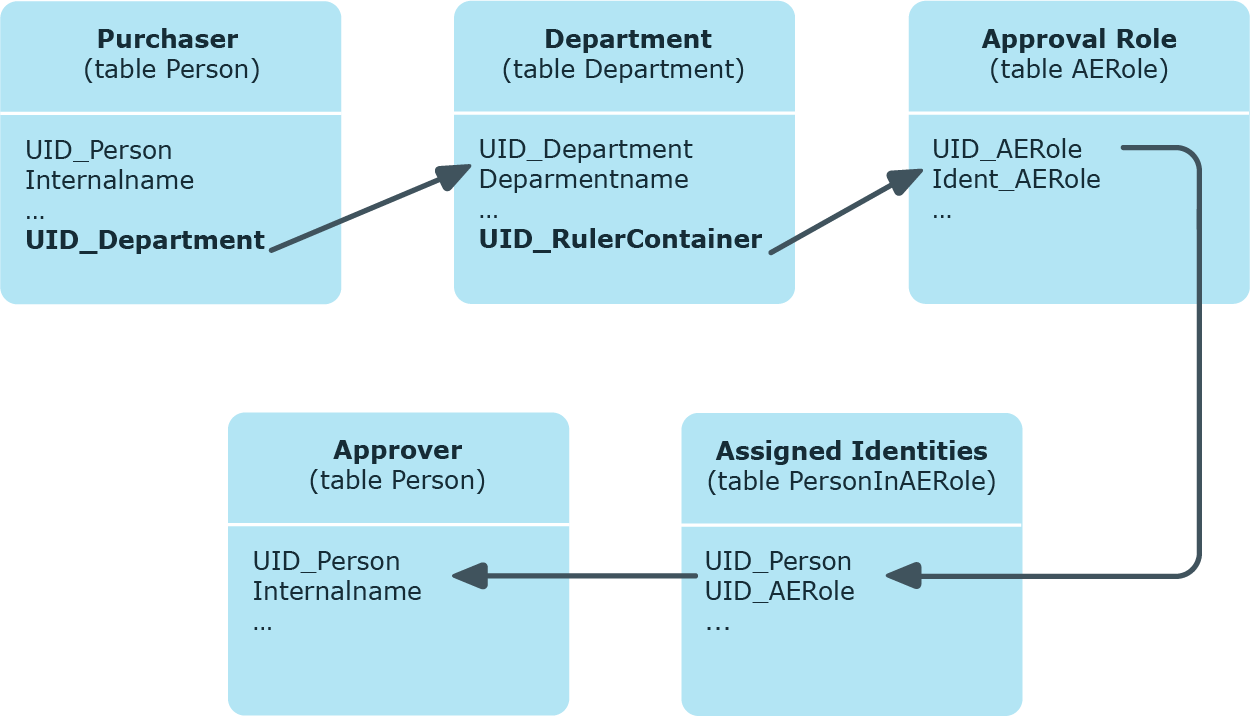If members of a specific role are to be determined as approvers, use the OR or OM approval procedure. In the approval step, also specify the role to be used to find the approver. The approval procedures determine the following approvers. If a deputy IT Shop has been entered in the main data of these identities, they are also authorized as approver.
|
Selectable roles |
Approver |
|---|---|
|
OM | |
|
Departments (Department) Cost centers (ProfitCenter) Locations (Locality) Business roles (Org) |
Manager and deputy manager of the hierarchical role specified in the approval step. |
|
OR | |
|
Departments (Department) Cost centers (ProfitCenter) Locations (Locality) Business roles (Org) Application roles (AERole) |
All secondary members of the hierarchical role specified in the approval step. |

 OA - product owner
OA - product owner